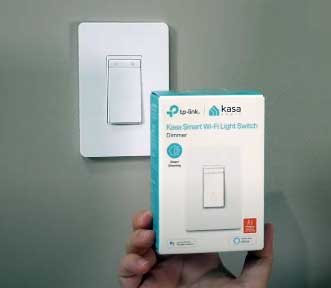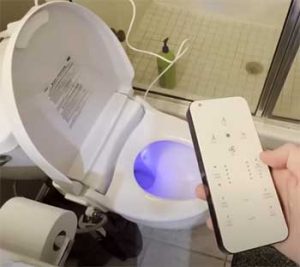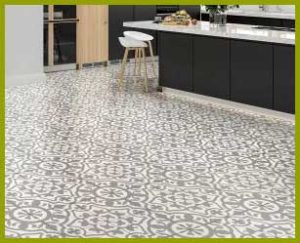In the ever-growing world of home automation, choosing the right smart switch can feel as confusing as solving a Rubik’s cube. Today, we’re going to unpack two giants in the smart switch industry: Caseta and Kasa.
A Brief Comparison Table
| Feature | Caseta Smart Switch | Kasa Smart Switch |
| Price | Higher | Lower |
| Design | Sleek & premium | Practical |
| Requires a Hub | Yes | No |
| Advanced Features | Yes (e.g., geofencing) | No |
| Apple HomeKit Compatibility | Yes | No |
| Wide Product Range | No | Yes |
| Installation & Setup | Easy but requires hub setup | Easy & direct Wi-Fi connection |
| Reliability | High (Clear Connect technology) | Good but depends on Wi-Fi reliability |
| Ceiling Fan Switch Available | No | Yes |
Caseta Smart Switch: The Basics

Caseta, a product line from the seasoned manufacturer Lutron, prides itself on premium design and reliable performance.
One distinctive feature of the Caseta smart switch is that it necessitates a Lutron Smart Bridge (their version of a hub), which connects to your Wi-Fi router.
This requirement might initially seem like an extra hassle, but it enhances the reliability of the smart switch while reducing the load on your home Wi-Fi network.
Caseta Smart Switch: Pros and Cons
Pros
- Reliability: Caseta uses Lutron’s Clear Connect technology, which provides a dedicated connection that’s free from interference from other devices, ensuring reliable operation.
- Advanced Features: Caseta switches offer advanced features such as geofencing and integration with Lutron’s range of smart window shades.
- Apple HomeKit Compatibility: Caseta switches work seamlessly with Apple HomeKit, a plus for those living in the Apple ecosystem.
- Premium Design: Caseta switches have a sleek and refined look, adding a touch of elegance to your home decor.
Cons
- Price: Caseta switches are typically more expensive than their competitors, including Kasa.
- Requires a Hub: The need for a separate Smart Bridge adds to the overall cost and can be a bit of a hassle during setup.
- Limited Product Range: Unlike Kasa, Caseta does not currently offer a dedicated smart ceiling fan switch.
Kasa Smart Switch: The Basics
On the other hand, we have Kasa, a product line from TP-Link, a well-known tech company.
Kasa smart switches are admired for their affordability and straightforward setup. Contrary to Caseta, Kasa switches connect directly to your Wi-Fi network, eliminating the need for a separate hub.
Kasa Smart Switch: Pros and Cons
Pros
- Affordability: Kasa switches are usually more budget-friendly than their competitors, including Caseta.
- Easy Setup: Kasa switches connect directly to your Wi-Fi, eliminating the need for a separate hub, which simplifies setup.
- Wide Product Range: Kasa offers a broad product line, including a smart switch for ceiling fans.
- No Hub Required: The absence of a required hub makes Kasa switches simpler to install and reduces the overall cost.
Cons
- Design: While practical, Kasa’s design isn’t as sleek or premium-looking as Caseta’s.
- Lack of Advanced Features: Kasa switches lack advanced features like geofencing, which are available with Caseta switches.
- No Apple HomeKit Compatibility: Kasa switches aren’t compatible with Apple HomeKit, potentially a drawback for iPhone and iPad users.
Comparing The Caseta and Kasa Smart Switch
So how do these two products stack up when placed side-by-side?
- Installation and Setup
Both Caseta and Kasa boast easy installation processes, requiring only basic electrical knowledge. The apps for both smart switches guide you through the setup process and make it quite user-friendly.
The principal difference lies in the requirement of a hub for Caseta.
- Functionality
In terms of functionality, Caseta switches offer superior features like geofencing, which allows your lights to turn on or off based on your location.
Kasa, however, excels in providing a wider product range, including a ceiling fan switch, something Caseta currently lacks.
- Compatibility

When it comes to compatibility with other smart home devices, both Caseta and Kasa have got you covered.
They support popular voice assistants like Alexa and Google Home.
However, Caseta holds an advantage as it’s compatible with Apple’s HomeKit, a feature not available with Kasa switches.
- Price
Kasa takes the crown for affordability.
Their switches are typically less expensive than Caseta’s, and the absence of a required hub reduces the overall cost.
- Design
Caseta has a more refined design with a sleek look, whereas Kasa’s design is practical and blends well with most homes.
Also Read: Differences Between Water Heater Mixing Valve And Booster.
Frequently Asked Questions (FAQ)
Let’s address some frequently asked questions about Caseta and Kasa smart switches:
As of this writing, there’s no official announcement from Lutron about discontinuing the Caseta line. In fact, Caseta remains a popular choice among users for its reliable and feature-rich smart switches.
Caseta and Z-wave are different types of communication protocols used in smart devices. Caseta uses Lutron’s proprietary Clear Connect technology, offering robust and reliable performance. On the other hand, Z-wave is an open protocol used by various manufacturers, offering broad compatibility at the risk of potential interference.
Yes, Caseta smart switches require a Lutron Smart Bridge to operate. Although this adds an initial investment, it promotes more efficient performance and less strain on your Wi-Fi network.
Yes, Kasa offers a smart switch specially designed for ceiling fans. This product allows users to control their fans remotely or via voice assistants, adding to the convenience and smartness of your home.
Wrapping it Up
Ultimately, choosing between Caseta and Kasa smart switches depends on your individual needs and budget. Caseta offers more advanced features and a premium design, but it comes at a higher price point and requires a hub.
Kasa, on the other hand, delivers straightforward functionality, a wider product range, and affordability.
No matter what you choose, both options are capable of significantly enhancing the smartness of your home, bringing comfort, convenience, and control right at your fingertips.
After all, who doesn’t love the idea of controlling lights or fans without having to leave the couch?



